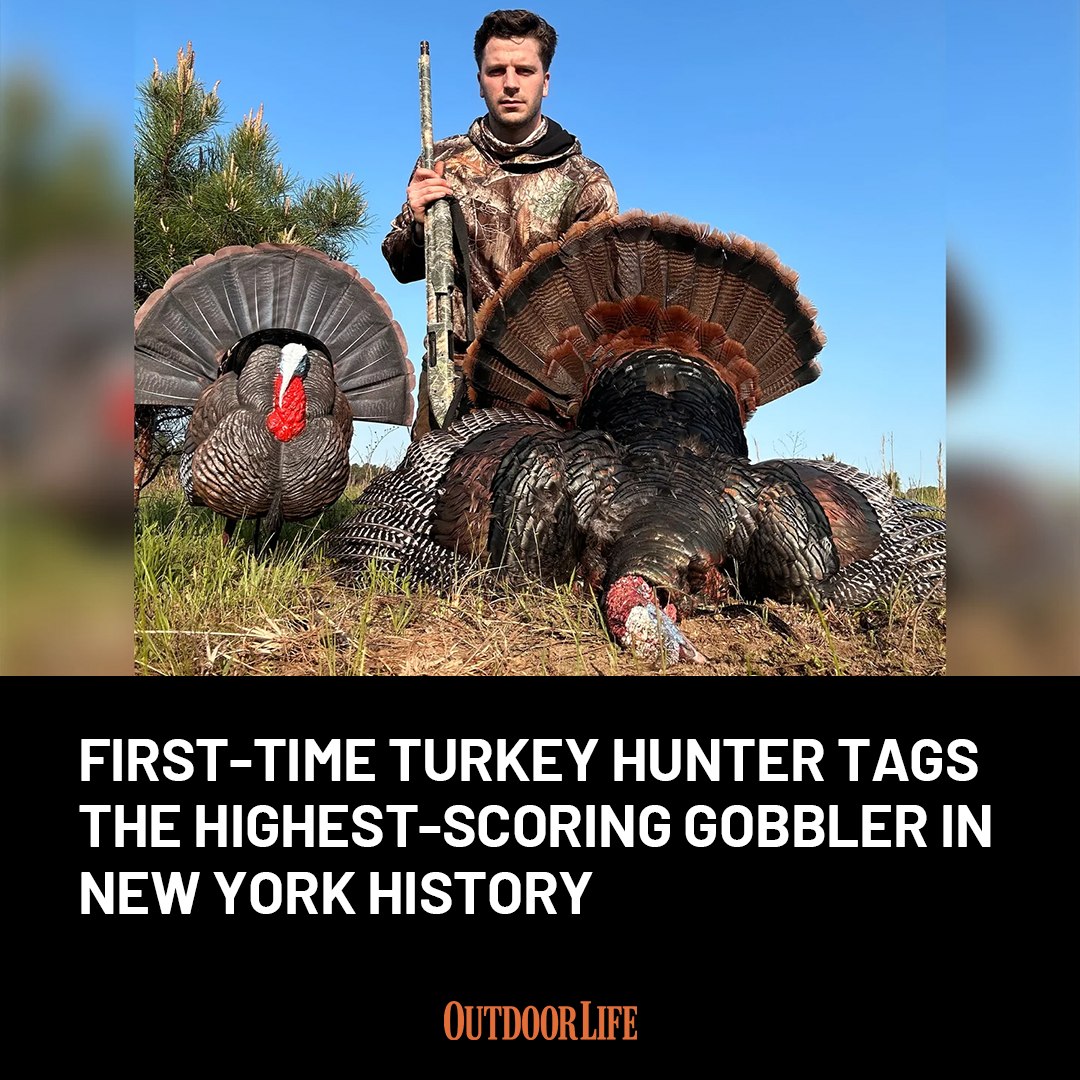A Deer Hunter’s First Tom
Tellone, 32, lives in New York City but is no stranger to the woods. A lifelong deer hunter, he grew up chasing whitetails with his dad upstate. So, when he heard Long Island was holding its first-ever spring turkey season, he figured he might as well give it a shot.
“I love to hunt deer, and have most of my life, but I don’t know much about turkey hunting,” Tellone tells Outdoor Life. “The places I’ve hunted deer are a long way from the city, and when New York opened a firearms turkey season in Suffolk County for the first time this year, I decided I was gonna get after the birds because there are turkeys just 90 minutes from where I live in the city.”
In March, he started scouting on public land in the county and set up a few trail cameras. It didn’t take long for him to locate some turkeys near a large open field, and he went out for the first time on May 2, the second day of the spring season.

“I got to my hunting area late that morning after sunrise, and toms were going crazy, gobbling everywhere,” Tellone says. “On my way back to the truck, I spotted the birds, tried calling to them, but they wouldn’t come close.”
Realizing that his lack of experience with a call might be doing him more harm than good, Tellone bought a full-body strutter decoy before going back to his spot on May 7. But it was 25 degrees warmer by then, and the gobblers had gone silent. He hunted another full day without seeing or hearing a bird, and was starting to think his window of opportunity had already closed.
“Then I read a story about hunting later in the season when it was hot and the birds weren’t gobbling much,” he says. “The story said to be aggressive, and not to give up, and that’s what I did. My dad taught me never to give up.”
Late-Season Turkey Tactics
On May 10, he left New York City by 3:30 a.m. and made it to his spot by 4:30, roughly 45 minutes before first light. He walked to the area where he thought the birds were roosted and heard some activity right away.
After sunrise, he spotted a couple hens and some toms 80 yards away in an open field. He stopped and called, but after not getting a response, he figured he could close the distance by half and get in shotgun range.
“There were four big toms and they were pushing two hens around in the field,” Tellone says. “The only way I could get closer was to belly crawl through the cold mud toward them. I used my turkey decoy as cover in front of me as I wiggled into the field.”
Noticing a slight depression in the field, he crawled down into it and got on the opposite side while the six turkeys headed his direction. The entire stalk took about an hour. He came out of the depression near a small pine tree, and he placed his decoy beside the trunk for additional cover.
“They hadn’t seen me, and right then the hens turned my way, pulling the four gobblers along behind them. One hen passed by me, and the first gobbler walked within range. I figured he was the alpha tom, so I shot him with my Mossberg 500 from about 35 yards.”
A Shocked Taxidermist

His turkey choke (which he had just received in the mail the night before) did its job, as did the Federal turkey loads he was using. (He says he can’t recall what size shot he used.) The bird folded on the spot.
“It was the first time I’d ever seen a dead wild turkey, and of course it was my first tom,” he says. “I called my dad from the field and told him the bird was huge and really heavy.”
Still, he didn’t realize how big the bird really was until he brought it to his taxidermist.
“The taxidermist told me it was the biggest bird he’d ever seen, and he’s an ardent and well-traveled turkey hunter.”
This prompted Tellone to score the bird using NWTF’s system. Had he not done so, he never would have known that his gobbler was the highest-scoring wild turkey ever taken in New York, surpassing a 24-year-old state record.
Read Next: College Kid’s First Turkey Turns Out to Be a Record Breaker
Tellone’s gobbler wasn’t the only bird of note taken during Suffolk County’s first-ever spring season, either. Just four days before he sealed the deal on the 28-pounder, another hunter tagged a record-book tom on public land there.
“When we checked with NWTF, we learned that another big Suffolk County tom had also been taken this year,” Tellone says. “I think that bird now ranks as No. 3 in the state’s record book.”
